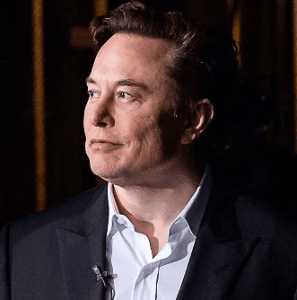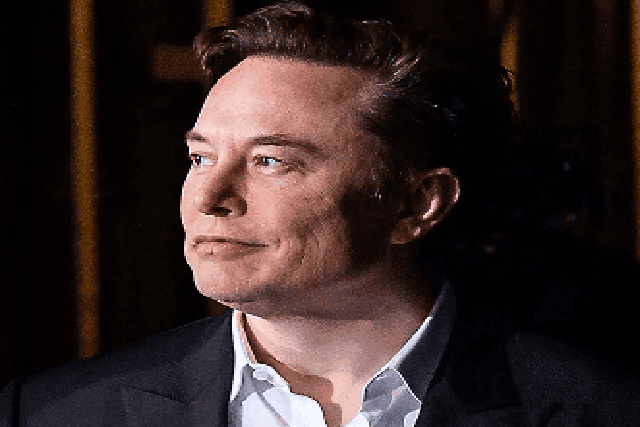Why Elon Musk is Famous
Hey, guys today we will share a few important things about Why Elon Musk is a Famous and top-notch business entrepreneur right now! This post helps to know his entire business and why people are very much attracted to his daily activities.
After making a successful bid to buy Twitter for $44 billion this week, Elon Musk is on the verge of taking on a new role as its owner. The billionaire businessman can now add the social media app to his extensive portfolio of companies that he has founded, funded, and supported over the course of his extensive career. This timeline covers Musk’s most significant business ventures over the previous thirty years, both profitable and unsuccessful.
Why Elon Musk is Famous
Here is details information about his ownership and the list of companies which he has operating.
1995: Zip2
Musk started Zip2, an online company directory, with his brother in order to replace the traditional paper Yellow Pages. (Google wouldn’t make its debut until 1998) In 1999, he sold it to Compaq Computer Corporation for a price exceeding $300 million. But in 1996, the board of directors chose to replace Musk as CEO with a more seasoned executive, and Musk was fired.
1999: X.com
With three other co-founders, Musk launched X.com, an online bank, with some of the windfall from the sale of Zip2. Incentives for sign-ups and an easy way to transfer money digitally—without mail or traditional banking infrastructure—made X.com’s business model novel for its time. During the launch, Musk described his company in an interview with CBS MarketWatch by saying, “There are no minimum balances.” A $20 promotional offer can be deposited into your checking account when you open an account. You can transfer $8 to your S&P fund, $3 to each of your bond and money market funds, and $6 to your checking account.
He continued, going into greater philosophical detail about the new business, saying, “In my opinion, the Internet had gone through a couple of stages and was ready for another stage.” “Where people could rely on the Internet for information was the first step. This was probably in 1995 or 1996. The second was starting to rely on the Internet for shopping and using credit cards to make online purchases of pet food, books, toys, and other items of that nature. People are probably ready to use the Internet as their primary financial repository at this point, which is the third stage.
2000: PayPal
Less than a year later, X.com and software company Confinity merged to form PayPal, a safe online payment gateway with roots in PalmPilot payments. One of Musk’s most prosperous ventures was PayPal, which he and his associates—including Peter Thiel, the co-founder of Confinity—sold to eBay in 2002 for a $1.5 billion stock transaction. Still, it was a difficult beginning. PayPal was once listed as one of the “worst business ideas” of 1999. In 2000, while Musk was still on his honeymoon, the board replaced him as CEO with Thiel.
In 2002, PayPal went public on the NASDAQ stock exchange, and eBay later acquired PayPal. They planned to keep PayPal until 2015 before spinning it out.
2002: SpaceX
Musk then focused on an ambitious objective: space travel and the eventual colonization of Mars. Over the last two decades, SpaceX has experienced numerous rocket launch mishaps and Starship explosions. However, it has also grown to be a major force in the space sector, setting several records along the way, such as being the first private enterprise to launch a vehicle into orbit and place humans in orbit. Its reusable rockets are well-known.
Starlink is a constellation of satellites that SpaceX is developing with the goal of providing commercial internet service globally.
2002: The Musk Foundation
One of Musk’s less publicized projects is the Musk Foundation, which was established as a 501(c)3 non-profit organization. Its declared objectives include advancing pediatric research and education, renewable energy development, and the creation of “safe artificial intelligence to benefit humanity.” It awarded about $25 million between 2002 and 2018, with roughly half going to Musk’s own company OpenAI. (Since 2012, Musk has also signed The Giving Pledge, an initiative by which a number of the wealthiest individuals on earth have promised to donate the majority of their fortune at some point.
2004: Tesla
These days, Musk’s most well-known role may come from his leadership at Tesla, the electric vehicle manufacturer bearing the name of renowned inventor Nikola Tesla. Founded in 2003 by two other men, Tesla is estimated to be worth over $1 trillion at one point in 2021. Musk invested $6.5 million in the company’s Series A funding round and later assumed a more prominent role. He took over as CEO in 2008. With more than a million sold worldwide, the Model 3 is currently the most well-known electric vehicle in production.
But Tesla has faced its fair share of controversy, from lengthy manufacturing and delivery delays to vehicle safety issues and worker complaints regarding working conditions and management styles.
2006: SolarCity
When his cousins founded SolarCity in 2006, Musk was one of their main financial backers and showed them support from the beginning. SolarCity was a solar energy company that installed solar energy systems that were leased to residential users. By the mid-2010s, the company had become the top residential solar installer in the United States. In 2016, Musk paid $2.6 billion in stock to Tesla to acquire SolarCity, which it then integrated into Tesla Energy.
2015: OpenAI
In 2015, Musk co-founded OpenAI, an artificial intelligence research lab that was initially funded by a $1 billion pledge from its founders and operated as a non-profit with a for-profit component. Musk has been transparent about his desire to create “friendly” AI that benefits people, but disagreements with Tesla’s AI initiatives ultimately led to his resignation from the board in 2018.
2016: Neuralink
In 2016, Musk co-founded Neuralink, another research project, with the aim of developing “brain-machine interfaces,” or BMIs, that can be inserted straight into the body. Neuralink’s research and claims have not been well received by neuroscientists. Although they presently use animals in their research, their plans to start using human subjects were pushed back to 2022.
2016: The Boring Company
The Boring Company is one of Musk’s side projects. It was established as a SpaceX subsidiary with the goal of assisting in the removal of city traffic via underground tunnels. It is to construct tunnels. They began by digging a tunnel beneath the California SpaceX facility as an experiment. The Boring Company separated into a separate legal entity in 2018 and finished building a tunnel in Las Vegas in 2021 to transport tourists beneath the Las Vegas Convention Center. Presently, it is engaged in additional tunnel projects for subterranean transportation in Las Vegas. The majority of other projects are speculative.
Musk once audaciously proposed the “Hyperloop” system, which would build tunnels across the nation to expedite and transform underground mass transit between cities. On the Boring Company website, however, references to the Hyperloop have been removed.
2022: Twitter
Musk decided to buy Twitter for $44 billion at the end of April after accumulating enough stock to become a majority shareholder by April 1. By “enhancing the product with new features, making the algorithms open source to increase trust, defeating the spam bots, and authenticating all humans,” he hopes to make Twitter “better than ever.”

N. B: All information collected from online search.

0 comments on “Why Elon Musk is Famous”